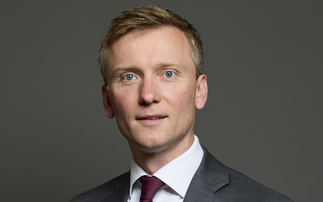
Global bond markets were rattled in 2022 by the aggressive policy pivot of major central banks to address persistent inflation.
In the US and abroad returns have been historically and pitifully poor. Throughout the year volatility - primarily emanating from rising interest rates - saw those bonds most sensitive to changes in interest rates, such as government bonds, generate deeply negative returns. But lower quality bonds - those rated below investment grade - also woefully underperformed. This is why fixed income investors could have lost just as much money in treasuries as they did in high yield bonds (Figure 1).
Figure 1: 2022 has been a tough year across fixed income (rolling 12-month total return, %)
Source: Bloomberg LP As at 15 October 2022. Government bonds are represented by the Bloomberg US Treasury Index, which measures US dollar-denominated, fixed rate, nominal debt issues by the US Treasury. High yield bonds are represented by the Bloomberg US Corporate High Yield Index, which measures the US dollar-denominated, high yield, fixed rate corporate bond market
There is nearly universal agreement on what it will take to stop the carnage: clarity on an end to central bank rate rises. US Federal Reserve chair, Jay Powell, has made it clear that the central bank wants to see "compelling evidence of inflation easing" before it shifts policy1.
But central banks are in a predicament. They know that monetary policy impacts the real economy with a lag. If we assume, for argument's sake, that it takes six months for changes in interest rates to impact growth then, for example, the very first Fed rate hikes from early 2022 are just starting to bite in the US, with more pain to follow. This phenomenon of more pain is often referred to as "tighter financial conditions". Simply stated, central banks are trying to drive economic growth lower and take the pressure off inflation by reducing demand through higher interest rates, which increases the cost of financing for consumers and corporations. Have they been successful? The "good" news is that the US is seeing evidence that its policy is starting to work. The risk is that they go too far with their interest rate hiking regime. Historically, financial conditions any tighter than what we have today have been associated with recessions.
A different driver of fixed income
Rate hikes and tighter financial conditions drove fixed income returns lower in 2022. Heading into 2023 we should see economies slow pretty dramatically. But I don't think we will see a repeat of 2008 or 2020, in which the slowdown was extraordinarily deep in specific areas of the economy. Instead, because financial conditions have tightened so much, I think economic pain will hit the tail of every industry. This means that companies and consumers with too much leverage, and sovereigns that are not well positioned to deal with elevated levels of currency volatility, are going to come under increased pressure.
Investors no longer have the benefit of policy-based shock absorbers - like quantitative easing or artificially low rates - to protect their portfolios and will need to find new buffers to cushion the impact of market and economic volatility. This essentially means a higher credit quality: companies with strong fundamentals, a healthy cash flow and lower leverage. It can also involve pivoting away from certain risks, including securities that are overexposed to the low end of consumer credit, to owning asset classes like municipal bonds and agency mortgage-backed securities.
The broad repricing of bonds and the higher starting yields we now have can help insulate investors from further losses. The yield curve is very flat and very high, which means even if investors are not comfortable with longer duration bonds, there are attractive opportunities in short-term corporate bonds which are yielding around 5.5% or 6%2.
For those who are comfortable with longer duration bonds, pay attention to the duration narrative which, in the US I think, will shift from focusing on the aggressive Fed hiking cycle to the impact of the Fed pausing rate increases. We have previously seen negative returns in the bond market followed by high, if not double-digit, returns once policy changes course, but the market response to the end of the hiking cycle generally happens very quickly, and trying to time the bottom can mean an investor misses out.
1FT.com, Jay Powell faces test of Fed's ‘unconditional' resolve to tame inflation, 22 June 2022 2Bloomberg, as at November 2022
This post is funded by Columbia Threadneedle Investments
Important information: Past performance is no guide to future returns. The value of investments and any income is not guaranteed and can go down as well as up and may be affected by exchange rate fluctuations. This means that an investor may not get back the amount invested. Your capital is at risk. Threadneedle Specialist Investments Funds ICVC ("TSIF") is an open-ended investment company structured as an umbrella company, incorporated in England and Wales, authorised and regulated in the UK by the Financial Conduct Authority (FCA) as a UCITS scheme. Certain sub-funds of TSIF are registered for public offer in Austria, Belgium, Chile, Denmark, France, Germany, Ireland, Italy, Luxembourg, the Netherlands, Norway, Portugal, Singapore, Spain, Switzerland, Sweden and the UK. Shares in the Funds may not be offered to the public in any other country and this document must not be issued, circulated or distributed other than in circumstances which do not constitute an offer to the public and are in accordance with applicable local legislation. Please read the Prospectus before investing. Subscriptions to a Fund may only be made on the basis of the current Prospectus and the Key Investor Information Document, as well as the latest annual or interim reports and the applicable terms & conditions. Please refer to the `Risk Factors' section of the Prospectus for all risks applicable to investing in any fund and specifically this Fund. The above documents are available in English, French, German, Portuguese, Italian, Spanish and Dutch (no Dutch Prospectus), Swedish (for the Key Investor Information Document only) and can be obtained free of charge on request from: Columbia Threadneedle Investments PO Box 10033, Chelmsford, Essex CM99 2AL. Issued by Threadneedle Investment Services Limited. Registered in England and Wales, Registered No. 3701768, Cannon Place, 78 Cannon Street, London EC4N 6AG, United Kingdom. Authorised and regulated in the UK by the Financial Conduct Authority. Columbia Threadneedle Investments is the global brand name of the Columbia and Threadneedle group of companies. columbiathreadneedle.com






